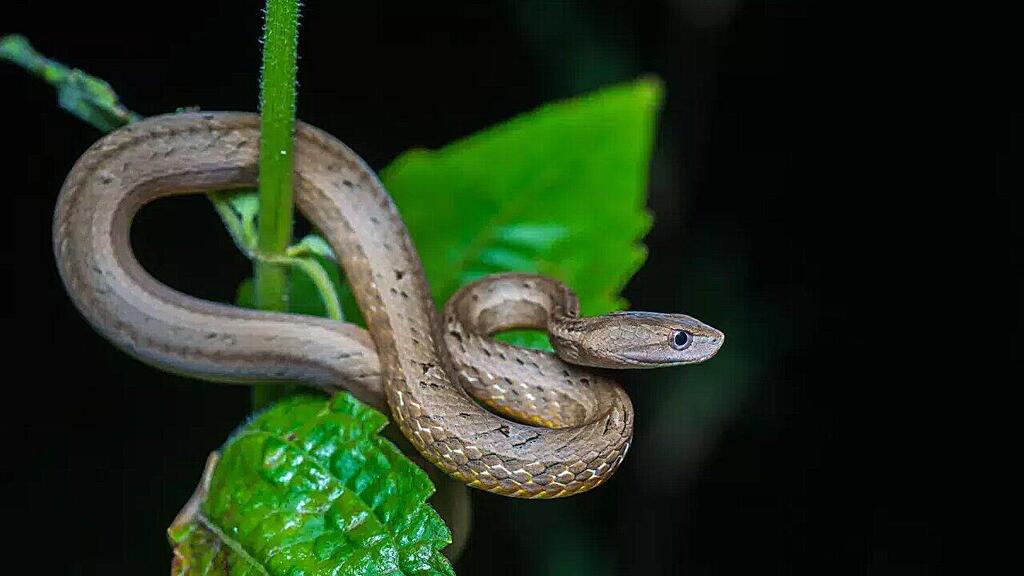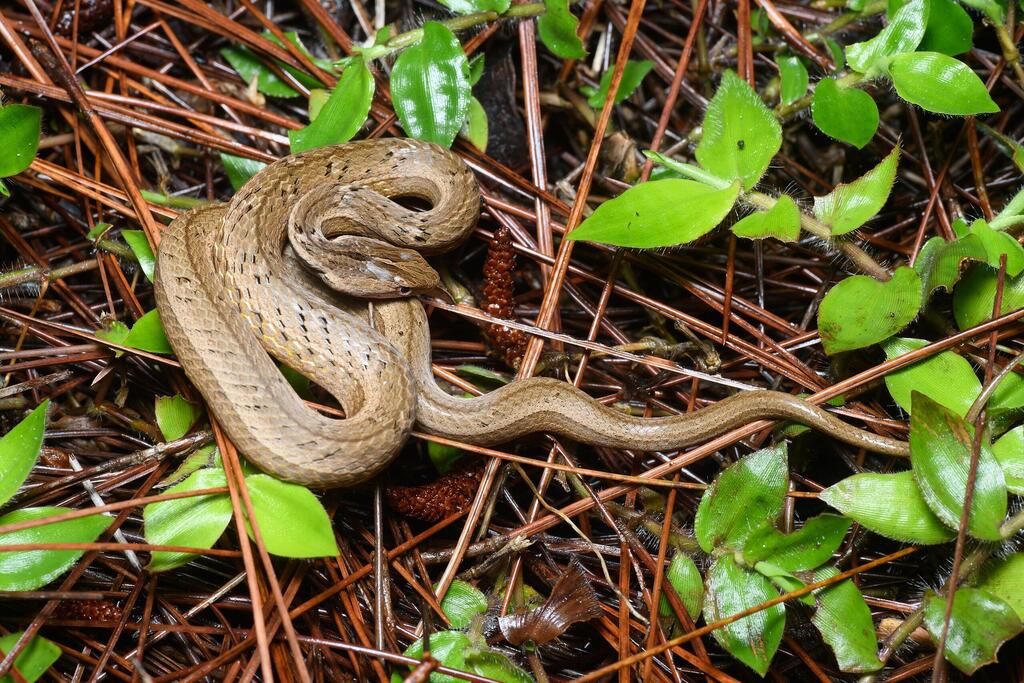Getting your Trinity Audio player ready...
The origins of the closest relatives of a medium-sized snake called the mock viper have been an unresolved mystery for evolutionary researchers due to its enigmatic history. To solve this puzzle, researchers analyzed DNA sequences from over 4,500 genes and conducted several dozen high-resolution micro-CT scans of its skull.
"Mock vipers are part of the superfamily Elapoidea, a major group of snakes to which one-fifth of global serpent diversity belongs. Evolutionary diversification within this superfamily happened very rapidly approximately 50 million years ago. Rapid evolutionary diversifications are probably the most challenging evolutionary scenario for a geneticist or evolutionary biologist to resolve,” says Sunandan Das from the University of Helsinki, who led the study.
Mock vipers aren’t true vipers, nor are they closely related to "true" vipers, but resemble arboreal viper snakes and share the same behavior. They also have a "fake" tooth at the front of their mouth, which tricks predators into thinking they have venomous fangs when their mouth is open wide. However, they also have a true venomous fang at the back of their jaw.
Their venom is weak and effective only against the snake's natural prey including lizards, frogs, and other snakes. Within the Elapoidea superfamily are several snake families with different types of venom and fangs, such as the Elapidae family, which includes cobras and mambas.
The study, published in the Scientific Reports journal, focused on the Micrelapidae family, within the Elapoidea superfamily. Prof. Shai Meiri, curator of the terrestrial vertebrates collection at the Steinhardt Museum of Natural History, was part of a research team last year that included researchers from Finland, the U.S., Belgium, Madagascar, and Hong Kong.
The team conducted a study published in the Molecular Phylogenetics and Evolution journal, which laid the groundwork for the current study’s findings.
"Now, using the same data from last year's study and the new data, Das and his colleagues have defined an additional family within the Elapoidea superfamily, which they call Psammodynastidae," Prof. Meiri explained.
"The discovery of a new family of any vertebrate animals is surprisingly rare, an almost once-in-a-century phenomenon. This is a lifetime achievement for an evolutionary biologist. You rarely, if ever, see descriptions of whole new families of well-studied vertebrate animals anymore,” Das said.
Uncovering the phylogenetic position of mock vipers will pave the way for a much better understanding of the origin of snake fangs and the evolution that led to their development. Long and unique branches in phylogenetics, such as that of the mock viper, contain a high level of evolutionary distinctiveness, a measure used by biologists to prioritize the conservation and protection of animals.
Therefore, mock viper’s (or Psammodynastes pulverulentus by its scientific name) classification into its own family also serves an important conservation purpose, according to the study authors.
This small snake, which can grow up to 77 cm long, can be found in Asian countries including Bangladesh, Myanmar, Cambodia, China, India, Bhutan, Indonesia, Laos, Malaysia, Nepal, the Philippines, Taiwan, Thailand, and Vietnam.




